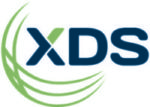
Welcome to part 2 of our series on combating sales suppression.
In the prior blog post, we discussed the magnitude of the sales suppression issue. It is a global problem due to the variety of techniques and readily available point-of-sale (POS) system features. Sales suppression has also been perceived as unidentifiable and untraceable without extraordinary manual efforts. Before we accept those assertions, let’s discuss the methods used to perpetrate this type of fraud.
Sales suppression is the practice of illegally removing cash from business activity to avoid paying taxes or other volume-based fees such as franchise fees, space utilization, and equipment rental. There are three techniques to perpetrating this fraud through the POS system:
- Zapping – The use of a physical device plugged into the POS system to activate software that can modify the closed transactions.
- Phantom-ware – Special program features built into the POS that allow transactions to be manipulated.
- Sales Suppression as a Service – “Consulting” or “support” services that remotely access the POS system to alter closed transactions. This is frequently perpetrated from across state lines to make it more difficult for states to audit.
These techniques sound extremely difficult and “high tech.” Are they really that complex? To assess the difficulty, XDS gave one of our developers a very special task. We provided them with a new copy of a commercially available POS system in a lab environment and simple directions: “go suppress some cash sales.” They did not receive any special training or documentation.
In one working day, the system was installed, configured, initial cash closing reports generated, sales transactions processed, customer receipts printed, system records altered, falsified receipts printed, and bogus daily reports generated. The reports included the falsified cash reconciliation, X and Z reports, and sales summary. All reports were balanced based on the falsified transactions. To emphasize the potential impact on your jurisdiction: this happened in a single working day. With 20 lines of code, they removed more than 50% of the daily cash sales and the associated sales tax. While inventory reports were not addressed, you can make your own assumptions on the difficulty of modifying them as well.

With individuals seeking technical assistance on the dark web and a technical adoption rate of one working day, do you really think it’s possible your jurisdiction is avoiding this type of fraud? Thanks to the remote connectivity tools currently available, the cottage industry of “consultants” can move freely and quickly to avoid discovery. This is further complicated by the fact that nearly all POS system vendors include the capability in their systems. How can you possibly keep pace with that growth potential?
As mentioned in the first blog in this series, many states have passed legislation making it illegal to sell or possess a zapper. However, with Phantom-ware embedded in nearly every POS system and rapid advances in remote system access, those laws will provide little protection from or opposition to rapid expansion of this fraudulent practice. The Internal Revenue Service estimates 30% of retail businesses are already perpetrating this type of fraud. You’re already facing an epidemic where constraining the supply of suppression techniques will not be fully effective. Pursuing the suppliers will become the classic game of “whack a mole.” When you remove one supplier, there are plenty of other suppliers, system vendors, and unethical “consultants” prepared to close the gap.
To more effectively combat sales suppression, you need solutions that keep pace with the fraudulent technology and process expansion. You also need to address the retail businesses that are compromised.

XDS isn’t here simply to illustrate the growth of the problem. We are your partner to help resolve it with much more than an analytical selection process. To find out key steps to ending these fraudulent practices, return for our next post in the series: Sales suppression fraud is resolvable.
